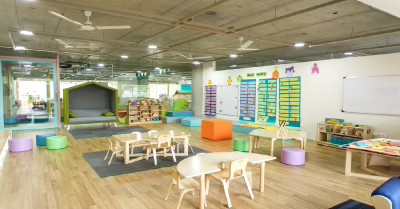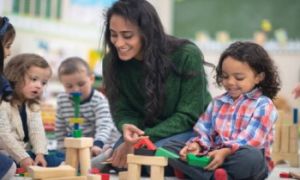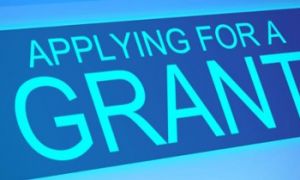The structure and organisation of a learning environment can have immense impact on all aspects of a child’s development, ranging from physical and cognitive to social and emotional growth. The following article provides information on What Are Interest Areas and Their Benefits, Common Interest Areas, Guidelines For Planning Interest Areas and more.
What Are Interest Areas and Their Benefits
Interest areas are specific places in a classroom where specific activities are arranged for the children to explore. Also known as learning centres, these are usually found in preschool classroom which subdivide the classroom into spaces that allow children to practice and nurture skills related to specific learning areas for example a discovery centre for science or related to several knowledge areas like a dramatic corner can be used to learn social skills, performing arts, emotional regulation as well as math and science concepts through creating of props, costumes etc.
The main benefits of having interest areas in a learning environment are:
- Interest areas help educators to provide a balance in learning experiences; by setting apart spaces to facilitate artwork, pretend play and physical games for children, the learning environment ensures a more holistic development as opposed to focusing only on numeracy, literacy and science that the traditional classroom did.
- Separate interest areas with varied materials offer children a range of clear choices. Sometimes children want to work quietly, either alone or with other children, while at other times they may want more active play with blocks, woodwork or role-playing stories. The choice in activities allows children to exercise agency in learning experiences and interactions.
- Since interest areas accommodate a few children at a time, they address preschool children’s preference to be in a small-group setting. With a manageable number of other children, they feel comfortable and play more positively than in larger groups.
- Smaller well-defined spaces help children concentrate better on their work and in this way interest areas can facilitate more complex and elaborate play.
Common Interest Areas
Here are some of the interest areas that can be set up in a learning environment.
Dramatic Play Area
This is where children role-play situations and characters from real life or fantasy scenarios. Encourage their imagination and let them experiment with different roles by equipping the space with props and dress-up clothes. Feathers, jingly trinkets and old handbags can make for enjoyable props while cardboard boxes and sheets can be used to create sets. Put together treasure chests containing loose material like scarves, capes and stoles; also use mirrors so children can see themselves from other angles and perspectives. Sometimes this area might be a kitchen/home living area; other times it might be a post office, restaurant, doctor’s office, or rocket ship. As far as possible set up role play scenarios with real items that reflect children's lives, for example, cooking tools, small appliances that no longer work, old clothes, and other objects and tools from children's houses and yards. Such items reflect the lived experiences of children, their cultural contexts besides allowing them to imitate significant adults. However, see that items and equipment in the dramatic play area are rotated over the year to appeal to varying interests of the children.
Construction Corner
This area consists of tools and materials with which children can build a range of objects. Equip the space with different kinds of blocks - wooden unit blocks, large cardboard blocks, plastic blocks, Lego, mobile and meccano. You can include unstructured materials like Paper mache, clay, wire, plaster, timber, bricks and even recycled materials like cardboards, newspapers, plastic containers or home decorating materials such as tiles, carpet samples, fabric samples, door, old curtain rods and rings and wall paper. Additional materials such as cars, trucks, boats, people and animals can be regularly rotated in the block area based on the current curriculum and the interests of the children. Here children can work with others or alone to construct their own creations. This area can also facilitate transition from parallel play to cooperative play besides offering opportunities for problem-solving, imagination, vocabulary as well as exploration of and math and science concepts. However for such learning to happen, it is important for teachers interact with children by asking questions about their constructions, offering help and cooperative play as needed. Also allow enough space so that children build structures over time, and make larger, stronger creations that improve on previous sessions.
Manipulative play area
Manipulative play refers to activities where children move, order, turn or screw items to make them fit. In such an area then children would be able to play with puzzles, pegboards, beads, collectibles, patterning cards, matching games, file folders and other games. Rather than using fixed resources like jigaw puzzles or store-bought equipment, choose “loose” parts and materials that can be used in different ways and have no one solution. Also make available threading materials like beads and cotton reels as well as screwing materials like nuts, bolts and small plastic jars with lids. The manipulative materials are great to teach children numeracy concepts like comparing, measuring, sorting, sequencing besides fostering fine motor skills, hand-eye coordination and problem-solving skills. Such activities can be done alone, with a friend, or one-on-one with a teacher.
Literacy centre
Depending on the space and resources of the service, this can range from a cosy reading nook equipped with usual children’s favourites to regular library lined where brightly illustrated books are displayed on low shelves. Do up the space with soft furnishings so that children curl up on a rug or settle down against a few comfy cushions. Books should be rotated frequently and always available to the children. Children should be allowed to have one-on-one reading time with the teacher and own reading time besides joining larger or smaller groups for story-telling time. If possible, set up a Listening Centre too where children can listen to CDs of stories on headsets while following the pictures in their books. A small desk or table may also be planned for children to practice drawing and writing their names, letters, numbers, shapes and so on. See that such an area is well equipped with a variety of papers, envelopes, stamps, rulers, tape, glue, stencils, and many different types of writing instruments like crayons, pencils, markers and sand-writing trays.
Arts Area
This is a place for children to enjoy and explore different types sensory and creative experiences. So along with paper, paint and crayons, keep a variety of materials and textures within easy reach for the young ones to pick and play with. These can range from beads, yarn, clay, string, fabric, sponge and glue to wood, leaves, shells and even veggies. Make art time a playful experience in which children get to use colour and materials as they want. This might mean splashing, squelching, dribbling, stamping with paint, dough or even mud. If parents are worried about paint-splattered clothes, ask if they can send oversized T-shirts or smocks for their kids to play in. Most importantly, avoid putting up any specific object as a model and colouring books with pre-drawn patterns. Focus on art as an open-ended process for which there is no right or wrong way. Art projects may be done either independently, as a class or in small groups. In this centre, children not only get to develop small muscle control and dexterity, hand-eye coordination but widen their imagination and creativity.
Sensory area
While the art area can include sensory experiences as well, if a service has sufficient space, they may expand the sensory area to facilitate varied sensory exploration for kids. Such a space may have dedicated spaces for water and sand play along with assorted sensory bins. Alternately there may be a large sensory tub in which different elements and materials can be added for sensory play. Apart from water and sand, such a tub may sometimes contain rice, pasta or corn meal or fall leaves or even snow brought from outdoors. Scented play dough, mint and herbs are great ideas to engage olfactory senses of children as well. Keep accessible tools such as funnels, sifters, shovels, measuring cup so that children can engage in scooping and pouring play.
Toy area
Play with toys can be planned on the floor or on large tables and usually include things like large floor puzzles and table top board games. Children may work on them alone, with a friend, in a small group, or with a teacher. Usually taking place in the quieter rest hour, children play until they finish, sometimes following game rules, and sometimes making up their own rules.
Discovery Area
The Science & Discovery Area allows children to explore properties of things and how they work, as well as learn the vocabulary associated with them. Ensure that this area offers a mix of core equipment, tools, materials as well as those that can be rotated to sustain interest or to relate to the season. Some items that should always be available are plants, binoculars, different types of magnifiers and microscopes, various types of magnets, mirrors, sensory bottles, balance scales, tweezers and droppers as well as containers for insects or worms that children may unearth. Some items that may rotated include collections of rocks, leaves, shells, or other natural items, as well as photos or books about these items. If possible, extend the Science & Discovery Area outdoors so that children can watch for birds, measure icicles, spot worms and other such observations of their natural world.
Music and movement corner
Here children can have access to musical instruments and equipment so that they can play music on their own or make their own band. Services can use everyday items to make percussion and wind instruments with pots and pans, shakers made from bottles, wind chimes and even pipes from a variety of materials like copper, PVC, bamboo. This space can be used for singing songs and finger plays, playing song games like Hokey Pokey or Ring Around the Rosie, dancing – with or without props like ribbons or scarves – or painting to music. Teachers can also introduced children to music from around the world as well as music sung in a balance of lively and soft tempo. A great way of controlling noise levels in the room might be to use a noise level sign or traffic lights to visually set the noise level in the room for different times of the day. You could set it at a high level for indoor play times and at a low level for rest times.
Gross motor play area
Whether located in the outdoors or indoor playground, this area gives children the opportunity to use their large motor muscles and coordination by climbing, running, sliding, riding, swinging, bouncing, digging, piling, throwing, and building. If the indoor area has restricted space, you can build opportunities for children to climb and challenge themselves through raised decks, steps, stairs, ladders, boxes, stepping-stones and stilts.
Cooking
See that the classroom also has a place for cooking activities. This can even be made of something as simple as a table standing for a “snack bar” where children can help prepare and serve themselves a snack. Indeed children not only enjoy actions like blending, mixing, rising, pouring and kneading but the practice of measuring quantities and following a recipe offers learning opportunities as well, especially in numeracy. Above all, children learn important life skills like using various appliances and utensils, hand-washing and safe food preparation practices.
Apart from the above interest areas, there may be a designated digital learning centre too equipped with computers. Alternatively, they may be incorporated in the Library Area, or be located in area where they are likely to be used most, such as a Discovery Area.
Guidelines For Planning Interest Areas
- Before setting up interest areas in your room, note the location of electrical outlets, windows, doors, a sink, and storage space so that spaces can be created accordingly – for example art, sensory and cooking areas will have to be around the sink. Also jot down features of the room that have to be contended with like built-ins, columns, radiators, exposed pipes and the locations of doors that cannot be blocked.
- Make an inventory of materials you have to designate interest areas or create boundaries for areas that need protection such as block building or reading nook. Shelves, room dividers, sheer curtains, mats, tents and other visual dividers can be used to define play spaces and guide children where one area ends and another begins.
- Map out traffic patterns ahead of time so as to facilitate smooth movement from one area to another. The high traffic routes usually comprise of the paths children use to enter the room, put belongings in cubbies, use the bathroom and move in between popular interest areas.
- Locate interest areas that are relatively quiet, such as books, art, computers, and games and toys, away from noisier ones, such as blocks, music and woodworking.
- Combine resources to stimulate creative play. For example, add animals to the blocks. Instead of building towers, children may build a zoo.
- Plan well-lit areas for places where children will look at books, write and draw, care for plants
- Ensure materials are stored in consistent places in the classroom, on low shelves and in containers that children can see into and handle. Using pictures and drawings to label shelves and containers. All this will help children to independently access materials, thereby building agency and initiative.
- Place interest areas near required resources. For example, computers, CD players, and tape recorders need to be plugged into a power source and thus the digital corner will have to be located near electrical sockets.
- Consider the nature of floor covering. Messy activities such as art, sand and water play should preferably be organised on surfaces that can be washed. If not, then maybe you can cover the floor with drop cloths, pieces of vinyl, or even a shower curtain. The block corner will require soft, comfortable floor covering so children can sit or work on their knees for long periods of time.
- Plan the layout of tables. Toddlers and young children use the floor and open spaces for most of their play. The number of tables in the room thus can be kept to a minimum and used for toys and games, art, writing and cooking areas. However there should be enough table space for everyone, including adults, to be seated at one time for snacks or meals. Rest of the times, the tables can remain in the interest areas where they are needed.
- Check ease of supervision – The organization of interest areas should allow the educator to see children in every location to ensure that they are safe. Regulations on child abuse prevention require children to be supervised by educators at all times and this means planning classroom space in a way that has children in full view.
Setting up various interest areas offers a great way to support all-round development of children while fostering agency in learning.
References:
Especially For Children, Sage Pub
Creating The Perfect Play Space, Annandale Church
Manipulative Play and Activities, Education NZ







 As an Educator in Australia, your pay rate falls under the Children’s Services Award 2010. This award states the minimum amount that an employer can
As an Educator in Australia, your pay rate falls under the Children’s Services Award 2010. This award states the minimum amount that an employer can When working as a qualified Early Childhood Teacher (with a university degree) within a service, your rate of pay will come from the Educational Services
When working as a qualified Early Childhood Teacher (with a university degree) within a service, your rate of pay will come from the Educational Services When working as a Diploma Qualified Educator your pay rate is from the Children's Services Award 2010. This Award states your minimum rate of pay
When working as a Diploma Qualified Educator your pay rate is from the Children's Services Award 2010. This Award states your minimum rate of pay When working as a Cert 3 Qualified Educator, your pay rate is from the Children's Services Award 2010. This Award states your minimum rate of
When working as a Cert 3 Qualified Educator, your pay rate is from the Children's Services Award 2010. This Award states your minimum rate of Educational Leaders play a crucial role in their early childhood service by ensuring that the educational program aligns with best practices and supports the holistic
Educational Leaders play a crucial role in their early childhood service by ensuring that the educational program aligns with best practices and supports the holistic In early childhood education and care, ratios are more than a technicality—they are a frontline safeguard. Every child deserves responsive supervision, emotional connection, and developmental
In early childhood education and care, ratios are more than a technicality—they are a frontline safeguard. Every child deserves responsive supervision, emotional connection, and developmental With the new national child safety reforms kicking in on 1 September 2025, early childhood services like yours have a real opportunity to lead the
With the new national child safety reforms kicking in on 1 September 2025, early childhood services like yours have a real opportunity to lead the Here’s a comprehensive Mobile Phone and Smart Watch Policy tailored for early childhood education and care (ECEC) services in Australia, aligned with the latest 2025
Here’s a comprehensive Mobile Phone and Smart Watch Policy tailored for early childhood education and care (ECEC) services in Australia, aligned with the latest 2025 The Sea of Fish Challenge is a national initiative that invites children, educators, families, and communities to create and display fish artworks as a symbol
The Sea of Fish Challenge is a national initiative that invites children, educators, families, and communities to create and display fish artworks as a symbol Across the early childhood education and care sector, educators are sounding the alarm: current staffing ratios are insufficient to deliver safe, meaningful, and developmentally appropriate
Across the early childhood education and care sector, educators are sounding the alarm: current staffing ratios are insufficient to deliver safe, meaningful, and developmentally appropriate


